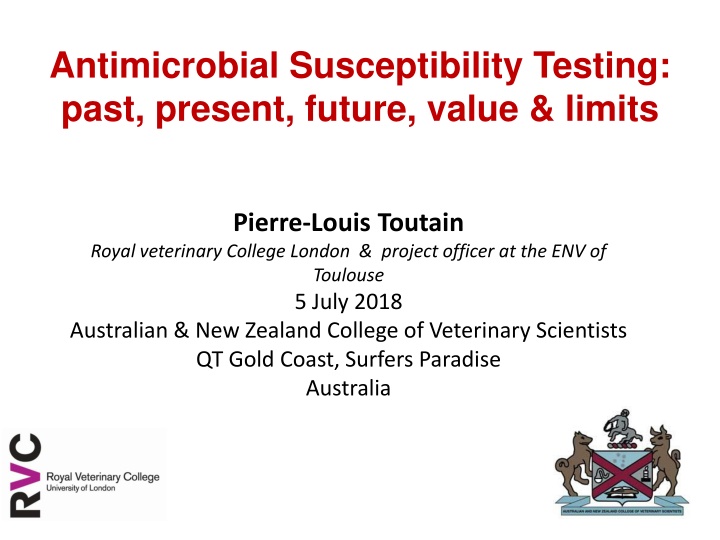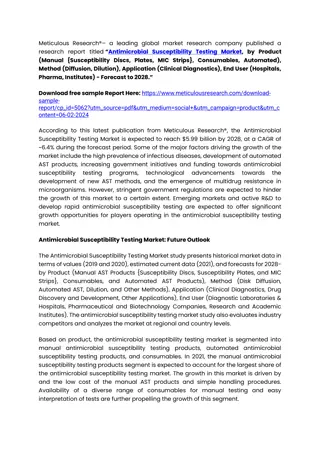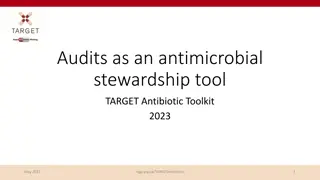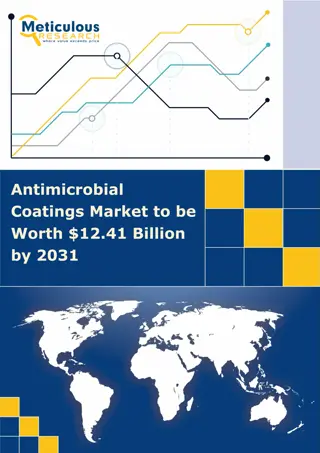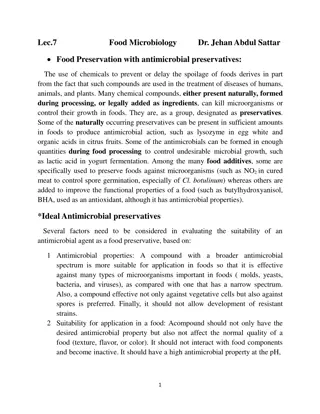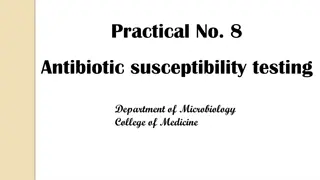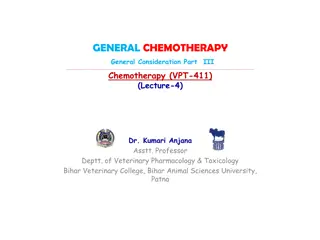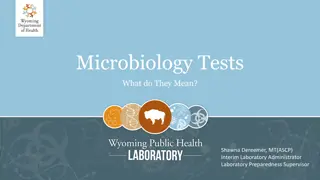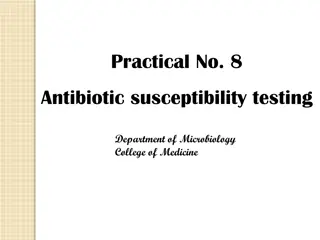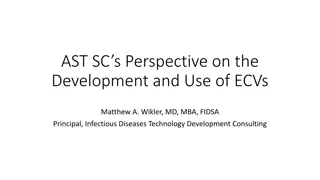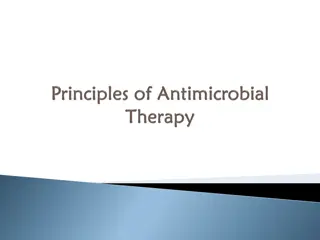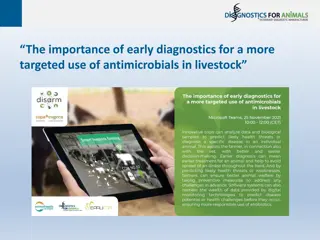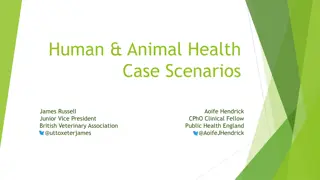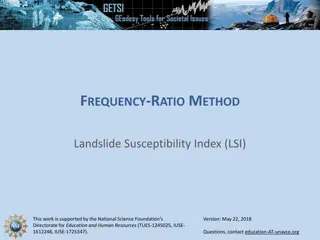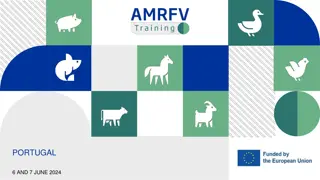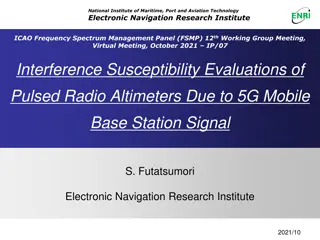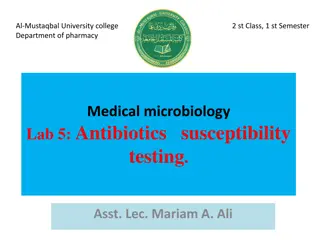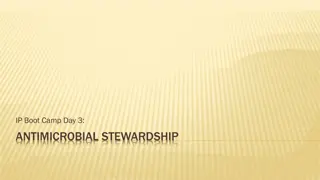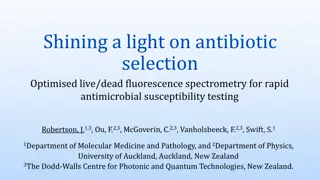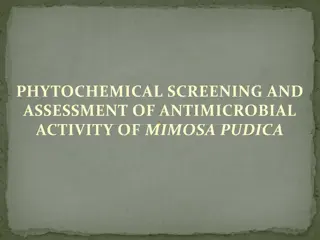Evolution of Antimicrobial Susceptibility Testing in Veterinary Medicine
Antimicrobial Susceptibility Testing (AST) in veterinary medicine has transitioned from limited usage to targeted therapy with species-specific clinical breakpoints. Current challenges include low testing frequency and the need for more reliable, rapid, and cost-effective testing methods. Incentives for wider AST adoption include faster results, affordability, and improved laboratory quality. The future of AST holds promise with advancements in diagnostic tests and Bayesian approaches. The reliability of AST, exemplified by Doxycycline testing in different species, underscores the importance of accurate testing in guiding antibiotic therapy decisions.
Uploaded on Sep 18, 2024 | 0 Views
Download Presentation

Please find below an Image/Link to download the presentation.
The content on the website is provided AS IS for your information and personal use only. It may not be sold, licensed, or shared on other websites without obtaining consent from the author.If you encounter any issues during the download, it is possible that the publisher has removed the file from their server.
You are allowed to download the files provided on this website for personal or commercial use, subject to the condition that they are used lawfully. All files are the property of their respective owners.
The content on the website is provided AS IS for your information and personal use only. It may not be sold, licensed, or shared on other websites without obtaining consent from the author.
E N D
Presentation Transcript
Antimicrobial Susceptibility Testing: past, present, future, value & limits Pierre-Louis Toutain Royal veterinary College London & project officer at the ENV of Toulouse 5 July 2018 Australian & New Zealand College of Veterinary Scientists QT Gold Coast, Surfers Paradise Australia
Antimicrobial Susceptibility Testing (AST) Past Limited used of AST with invalidated CBP (e.g. human CBP) Mainly empirical AMD therapy (with large spectrum AMD) Present Encouraging the use of targeted AMD therapy with narrow spectrum antibiotics AST compulsory to prescribe critical antibiotics The rational establishment of species specific CBP for veterinary medicine CLSI/VAST & EUCAST/VetCAST Limits Predictive value of AST AST and passive epidemiology Future Rapid diagnostic test Bayesian approaches
Veterinary Record (2013) EMA and the Federation of Veterinarians of Europe (FVE) undertook a survey into the decision-making process of veterinarians in Europe when deciding which antibiotics to prescribe. The survey was completed by 3004 practitioners from 25 European countries AST before starting treatment was frequently undertaken by 37.8 per cent of practitioners, but 9.8 per cent never request such tests, and 44.3 per cent only on a seldom basis prompted by poor response or complicated cases.
What the incentives might be to encourage more widespread use of AST. More rapid results Cheaper tests More reliable laboratory results (e.g. quality tests, testing on specific antibiotics used in animals rather than humans); Need for accurate in-house test kits; for easier sampling methods; ways to send samples
Reliability: The case of Doxycycline R Origin Pathogens Species S EUCAST Staphylococcus spp Human 1 >2 CLSI 2014 (Maaland & all) Staphylococcus pseudintermedius Dogs 5mg/kg/12h 0.125 >0.5
AST: the present To use specific veterinary clinical breakpoints (CBP) The establishment of CBP
Who establish CBP EUCAST European Committee on Antimicrobial Susceptibility Testing VetCAST CLSI The Clinical and Laboratory Standards Institute CLSI/VAST Sub-committee of CLSI dealing with the susceptibility testing of veterinary pathogens and determination of veterinary CBP
CBP ECOFF COCL PK/PD BP
Establishing ECOFFs Epidemiological/microbiological cut- off
ECOFF at VetCAST 1. A CBP will never lower than the ECOFF (see rule 10.2 of the SOP 1.2 (European Committee on Antimicrobial Susceptibility Testing, 2013) 2. As a surrogate of CBP Local administrations, when several CBP are required 3. For surveillance ECOFF is a parameter, not CPB
Step1 Selection of a PK/PD index predictive of clinical efficacy and/or prevention of resistance The setting of a PK/PD BP Step 2 Determination of the critical value (magnitude) of the selected PK/PD index Step 3 Computation , for a given animal species and for all possible (not probable) MICs of the percentage (proportion) of animals able to achieve the critical value of the selected PK/PD index (computation of so-called Probability Target Attainment (or PTA)
Step 1:Selection of a PK/PD index PK/PD Index fAUC24h/MIC fCmax/MIC was historically seen with aminoglycosides but is now losing favour, aminoglycosides being now managed as an AUC/MIC drug class , fCmax/MIC fT>MIC Rem: it was shown that for all drugs/formulations having a long half-live that AUC/MIC is the appropriate index (AU/MIC: universal index?)
Step 1: Determination of the best PK/PD index and of its critical value (magnitude ) PK/PD index Experimental value Default value Preclinical Clinical In vitro/In vivo In vivo Dynamic: killing curves Target species
PK/PD indices critical values: Killing curves & hollow fibers test systems
Modeling approach of killing curve to determine PK/PD index PD Florfenicol parameters EC50 (mg/L) 0.447 Emax (1/h) 2.01 Hill 2.7
Step1 The setting of a PK/PD CO Selection of a PK/PD index predictive of clinical efficacy and/or prevention of resistance Step 2 Determination of the critical value (size) of the selected PK/PD index Step 3 Computation , for a given animal species and for all possible (not probable) MICs of the percentage (proportion) of animals able to achieve the critical value of the selected PK/PD index (computation of so-called Probability of Target Attainment (PTA)
PTA mean vs quantiles Breakpoint for amoxicillin in pigs (CLSI) Q_91%: 0.125mg/L Q_59%=0.5mg/L NO PK variability (mean): 0.5mg/L 21
The clinical CO (COCL) The COCL is based upon the collection of isolates obtained during the clinical effectiveness studies. COCL reflects the upper limit of the MIC values associated with a high likelihood of clinical success [probability of cure (POC)]. There is no set method for establishing the COCL, and no hard target for POC. POC=0.9 POC= Probability of cure POC 1.0 0 MIC COCL MIC/Dose 23
Issues for to determine the clinical cutoff No public data relating MIC to outcome Rem: EMA, not FDA require to sample isolates during clinical trials An assumption that needs to be consolidated It exist a relationship between MIC and clinical outcome or between AST results (S,I,R) and clinical outcomes
VetCAST Position paper En route towards European Clinical Breakpoint for veterinary antimicrobial susceptibility testing: the VetCAST approach
Conclusions and Clinical Relevance Recovery of tilmicosin-resistant M haemolytica or P multocida isolates was rare, and no association was detected between MIC of tilmicosin and treatment response
AST results and clinical outcomes (Merged results for 4 AMDs from 3 different classes) Percentage failure AST S (n=364) I (n=23) R (n=17) cure improvement 72.5 19.5 8.0 69.6 21.7 8.7 52.9 41.2 5.9 Pulmonary conditions; Pasteurella multocida and Manheimia haemolytica
Future of AST: rapid diagnostic test Rapid microbiological identification Identification of the causative pathogen Currently culture-based technic (days) Molecular and genomic (Next generation Sequencing and others) Mass spectrometry (30 min) Rapid AST The current microdilution methods over 4-6h rather than 24 New technology (microfluidic)
